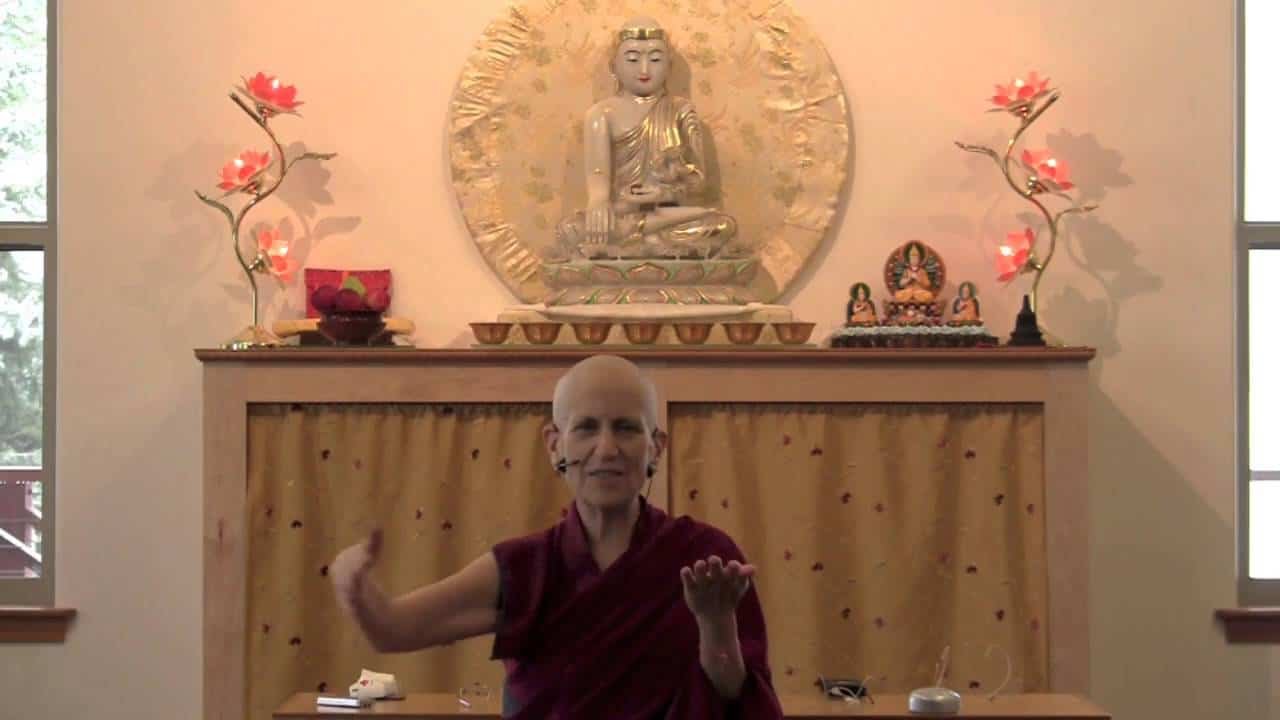The nonvirtues of lying and divisive speech
Having generated the motivation for a good rebirth, the text turns to creating the causes for that goal. Part of a series of teachings on the Gomchen Lamrim by Gomchen Ngawang Drakpa. Visit Gomchen Lamrim Study Guide for a full list of contemplation points for the series.
- Buddhas, arhats, and karma
- What comprises stealing
- The four parts of a complete karma of lying
- The four parts of a complete karma of divisive speech
- Creating a schism in the sangha and division between teachers and students are the heaviest of divisive speech
Gomchen Lamrim 26: The nonvirtues of lying and divisive speech (download)
Contemplation points
- What kinds of things are included in the non-virtuous pathway of lying? How have you seen this non-virtue operate in your life? How has acting in this way been harmful to you? To others?
- Describe the branches for a complete action of lying. Think of different situations where one of the branches might not be complete. How does this affect the result of the karma created?
- Consider the cultural differences when it come to the acceptance of lying? Is it still lying? Were there forms of lying you were encouraged to do growing up and/or as an adult that you now see aren’t beneficial?
- What kinds of things are included in the non-virtuous pathway of divisive speech? How have you seen this non-virtue operate in your life? How has acting in this way been harmful to you? To others?
- Describe the branches for a complete action of divisive speech. Think of different situations where one of the branches might not be complete. How does this affect the result of the karma created?
- Which branch MUST be present in order for there to be karma created? Why?
- We’ve gone over 5 non-virtuous pathways so far. Think of times in your life when any or all of these have been big dilemmas for you.
Venerable Thubten Chodron
Venerable Chodron emphasizes the practical application of Buddha’s teachings in our daily lives and is especially skilled at explaining them in ways easily understood and practiced by Westerners. She is well known for her warm, humorous, and lucid teachings. She was ordained as a Buddhist nun in 1977 by Kyabje Ling Rinpoche in Dharamsala, India, and in 1986 she received bhikshuni (full) ordination in Taiwan. Read her full bio.


